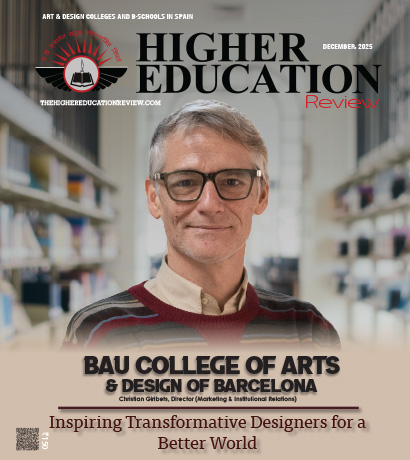Higher Education in Southeast Asian Countries - A Review

Dr. N. Nithyavathy, Associate Professor, Kongu Engineering College
Southeast Asian countries like Brunei, Burma (Myanmar), Cambodia, Timor-Leste, Indonesia, Laos, Malaysia, the Philippines, Singapore, Thailand, and Vietnam has a continuum of developmental diversity that has a diverse opportunity for analysis of themes and issues across borders for cooperation to enhance footprints in the global community. Expansion and strengthening higher education is a major concern in Southeast Asian countries. Despite several social advancements over a decade, the challenges faced by the Higher Education sector remain unanswered, which mainly attributes to the decrease in student enrolments, economic restructuring, and financial constraints, closer constructive and fewer productive cooperation.
"Households having household heads with higher education and high-skill levels have three to four times more household incomes than those with no formal education or those in low-skilled jobs"
Southeast Asia's less developed countries need to spend less than 20 percent of state budgets on education. Thailand is one of the only Southeast Asian countries that outspend its nearest HDI competitors when it comes to education. The increased economic interdependency among the different countries had forced the countries to change their policies and practices to become knowledge dependent economy. This swiftness in policy had brought significant importance to advanced technologies by creating a growing demand for technical, managerial, and administrative skills, although policymakers and practitioners convert such information into useful policies and practices confined to their national needs and circumstances.
The education is broadly grouped into three different sections: Initially, the primary and secondary class teachers shape the quality of the basic education system. Then, the teachers train higher technical, managerial, and administrative personnel. Finally, higher education institutions operate as supporters for the creative thinking needed for a competitive society. This role of the higher education system is attained through aligning the knowledge of graduates with the entrance requirements, linking higher education preparation with market demand, and increasing the emphasis on cost-sharing by students and families. Southeast Asians spent around two-fifths of how much Europeans and Central Asians pay for private schooling, a startling figure given by the wealth of European citizens. This may be because countries that invest in improving the quality and access to higher education benefit society economically and socially.
Educational standards between rural and urban areas are vast across the world and were bound to widen in Southeast Asia as urbanization has quickened. House-holds having household heads with higher education and high-skill levels have three to four times more household incomes than those with no formal education or those in low-skilled jobs. Urban household sizes are also declining, meaning parents can afford to spend more on the education of their fewer children. Household incomes, too, have risen dramatically in the last decade.
Most educational institutions in Singapore offer international students the needed support so that to achieve excellence in the academic as well as the professional front so that they are well prepared to lead a corporate life. Some of the top-rated universities like Singapore Institute of Technology (SIT), Nanyang Technological University (NTU) are renowned universities in the Asian continent, offering specialized degree programs to foreign students. The diversity of higher education is a reflection of the nation's special status. The government's strategy is on educational development. It is mainly focusing on quality improvement for developing national human resources to meet the needs of the country's socio-economic development and not on integrating the private sector in a way, which does not undermine the quality of education.
In most cases, higher educations are heavily regulated by the state. Across the world, privatization is often seen as a threat, particularly to the university's role in contributing to the public good, for students are viewed as 'consumers'. The entire degrees from private higher education institutions can be a source of concern. Data shows that graduates from these institutions are more likely than their counterparts from public higher education institutions to be unemployed, and ratings shows that private universities often get lower ratings than public ones.
In countries at the low-income level, at times, the 'quality' discussed often pertains to the quality of basic infrastructures, such as internet access, ICT, and dormitory availability for female students. On other occasions, the 'quality' referred to in the documents means the proper licensing of institutions. Most of the governments are trying to expand English-language education by promoting transnational cooperation and exchange with countries like Australia, France, the U.S., Japan, and Germany. To achieve universal completion of basic education, eliminate illiteracy, and ensure gender parity through priority programs, strategies, and activities in early childhood, basic, secondary, higher, and recurrent education. It has had to re-build an entire education system from a small base largely destroyed in the independence struggle.
Dr. N. Nithyavathy, Associate Professor
Dr.N.Nithyavathy is currently working as an associate professor at Kongu Engineering College, Perundurai, Erode. Her area of interest lies in Nano Technology, Virtual Instrumentation, Sensors and Signal Processing, and Control System. She is acknowledged and appreciated for publishing many articles and research journals related to the fields mentioned above.
"Households having household heads with higher education and high-skill levels have three to four times more household incomes than those with no formal education or those in low-skilled jobs"
Southeast Asia's less developed countries need to spend less than 20 percent of state budgets on education. Thailand is one of the only Southeast Asian countries that outspend its nearest HDI competitors when it comes to education. The increased economic interdependency among the different countries had forced the countries to change their policies and practices to become knowledge dependent economy. This swiftness in policy had brought significant importance to advanced technologies by creating a growing demand for technical, managerial, and administrative skills, although policymakers and practitioners convert such information into useful policies and practices confined to their national needs and circumstances.
The education is broadly grouped into three different sections: Initially, the primary and secondary class teachers shape the quality of the basic education system. Then, the teachers train higher technical, managerial, and administrative personnel. Finally, higher education institutions operate as supporters for the creative thinking needed for a competitive society. This role of the higher education system is attained through aligning the knowledge of graduates with the entrance requirements, linking higher education preparation with market demand, and increasing the emphasis on cost-sharing by students and families. Southeast Asians spent around two-fifths of how much Europeans and Central Asians pay for private schooling, a startling figure given by the wealth of European citizens. This may be because countries that invest in improving the quality and access to higher education benefit society economically and socially.
Educational standards between rural and urban areas are vast across the world and were bound to widen in Southeast Asia as urbanization has quickened. House-holds having household heads with higher education and high-skill levels have three to four times more household incomes than those with no formal education or those in low-skilled jobs. Urban household sizes are also declining, meaning parents can afford to spend more on the education of their fewer children. Household incomes, too, have risen dramatically in the last decade.
Most educational institutions in Singapore offer international students the needed support so that to achieve excellence in the academic as well as the professional front so that they are well prepared to lead a corporate life. Some of the top-rated universities like Singapore Institute of Technology (SIT), Nanyang Technological University (NTU) are renowned universities in the Asian continent, offering specialized degree programs to foreign students. The diversity of higher education is a reflection of the nation's special status. The government's strategy is on educational development. It is mainly focusing on quality improvement for developing national human resources to meet the needs of the country's socio-economic development and not on integrating the private sector in a way, which does not undermine the quality of education.
In most cases, higher educations are heavily regulated by the state. Across the world, privatization is often seen as a threat, particularly to the university's role in contributing to the public good, for students are viewed as 'consumers'. The entire degrees from private higher education institutions can be a source of concern. Data shows that graduates from these institutions are more likely than their counterparts from public higher education institutions to be unemployed, and ratings shows that private universities often get lower ratings than public ones.
In countries at the low-income level, at times, the 'quality' discussed often pertains to the quality of basic infrastructures, such as internet access, ICT, and dormitory availability for female students. On other occasions, the 'quality' referred to in the documents means the proper licensing of institutions. Most of the governments are trying to expand English-language education by promoting transnational cooperation and exchange with countries like Australia, France, the U.S., Japan, and Germany. To achieve universal completion of basic education, eliminate illiteracy, and ensure gender parity through priority programs, strategies, and activities in early childhood, basic, secondary, higher, and recurrent education. It has had to re-build an entire education system from a small base largely destroyed in the independence struggle.
Dr. N. Nithyavathy, Associate Professor
Dr.N.Nithyavathy is currently working as an associate professor at Kongu Engineering College, Perundurai, Erode. Her area of interest lies in Nano Technology, Virtual Instrumentation, Sensors and Signal Processing, and Control System. She is acknowledged and appreciated for publishing many articles and research journals related to the fields mentioned above.

